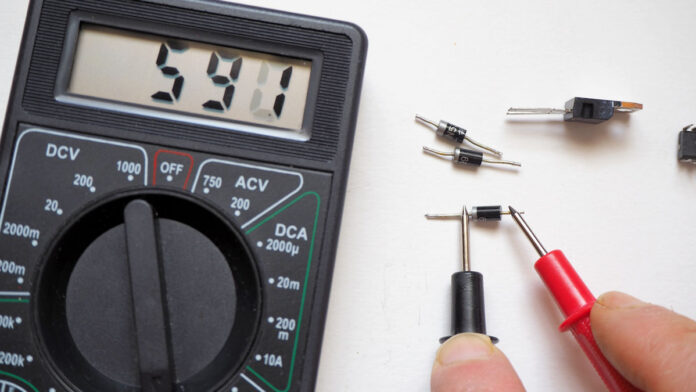Testing Alarm Zones With Diodes.
Testing Alarm Zones – It’s a tough job testing big zone loops in large buildings by hand – even with 2 techs communicating via 2-way or mobile phone it’s still a fiddle.
With 2 techs on the job, you can set your multimeter to resistance scale and get your mate to put a short circuit on the loop, then take the short circuit off. With the short off, the meter will show a resistance of infinite, while there’ll be low resistance with the short applied.
Alone you’d be running from one end of the loop to the other applying short circuits then removing them, which on a big site could be a real pain.
Testing Alarm Zones With Diodes
An alternative when working alone is to try testing alarm zones with diodes. The idea is to place a diode across the cable pairs at the remote end of the zone loop (the coloured band is at the negative end) and then attach a meter across the zone loop at the controller end.
What you should expect to see with a clean loop is low resistance when your meter leads are connected positive to positive and negative to negative, while you’ll get an infinite resistance when the leads are reversed.

This effect occurs because the diode is passing current only one way – that is when the anode of the diode is more positive than the cathode, but a bit less than 3/4 of a volt.
What’s beautiful about a diode test is that in the event of a short or an open on the loop, you’ll know what the problem is immediately. If there’s a short, you’ll get low resistance on the meter whichever way you connect the DMM leads, while an open will give you resistance of infinite no matter what you do.
You can also test to see if the wires are crossed at some point – you’ll be able to tell this because your low and high resistance reads will be opposite those you’d normally get on a clean loop – with the short off the meter will show low resistance, with the short on it will show infinite.
You can learn about testing for circuit continuity with a DMM here or read more SEN news here.
“Testing Alarm Zones With Diodes.”









